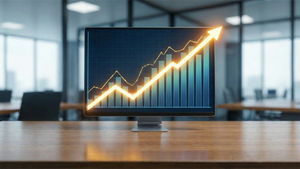
Gold prices have recently embarked on a historic ascent, shattering previous records and surging past the $3,500 per ounce mark in early September 2025. This unprecedented rally underscores gold's enduring appeal as a safe haven asset amidst a turbulent global landscape characterized by persistent inflation, mounting geopolitical risks, and significant policy uncertainties. The yellow metal's remarkable performance reflects a broad-based flight to quality, as investors, and increasingly central banks, seek to fortify their portfolios against economic volatility and currency debasement.
The immediate implications of this surge are far-reaching, signaling heightened market anxiety and a shift in investment sentiment. While gold miners are reaping substantial benefits, the broader financial markets are bracing for continued volatility. This dramatic rise in gold prices is not an isolated event; it is deeply intertwined with a global energy sector undergoing its own period of profound change, marked by heavy investments in electricity generation and grid capacity as nations grapple with both decarbonization imperatives and energy security concerns.
What Happened and Why It Matters
Gold's recent surge to new all-time highs, touching as high as $3,551.80 per ounce, represents a significant appreciation of approximately 30-35% year-to-date and nearly doubling in value since early 2023. This remarkable ascent is driven by a confluence of macroeconomic and geopolitical forces, creating a "perfect storm" for the precious metal.
One primary catalyst is the escalating safe haven demand. Ongoing inflationary pressures have eroded confidence in traditional currencies, pushing investors towards tangible assets like gold. Global economic uncertainty, including concerns about a potential slowdown and financial market fragility, has further fueled this flight to safety. Concurrently, a significant decline in the U.S. Dollar Index (DXY), which has fallen by nearly 9% year-to-date, makes dollar-denominated gold more attractive to international buyers. Record-breaking government debt levels, particularly in the U.S., exceeding $33 trillion, have also raised sovereign risk concerns, bolstering gold's role as an inflation hedge and stable store of value.
Policy worries are also playing a crucial role. A primary driver is the strong expectation of Federal Reserve interest rate cuts, with markets pricing in a high probability of a 25-basis-point cut at the Fed's September 2025 meeting. Lower interest rates reduce the opportunity cost of holding non-yielding assets like gold. Furthermore, divergent global monetary policies, with other central banks like the European Central Bank (ECB) and the Bank of Canada already cutting rates, diminish the dollar's dominance. Concerns over the Federal Reserve's independence, amplified by political pressure, have also contributed to market uncertainty, enhancing gold's appeal as a hedge against potential currency debasement.
Finally, geopolitical risks are a major propellant. Escalating regional conflicts, such as the Israel-Iran standoff and the persistent Russia-Ukraine conflict, along with heightened trade tensions between the U.S. and China, are driving significant safe-haven investment flows into gold, which is viewed as a neutral asset. A powerful and structural driver has been the unprecedented purchasing activity from central banks worldwide. This represents a fundamental shift in global reserve management, with central banks, especially those in emerging markets like China, India, and Turkey, aggressively diversifying their reserves away from U.S. dollar assets into gold. Gold holdings now account for nearly 20% of official global reserves and have surpassed the Euro as the world's second-largest reserve asset. This central bank demand signifies a long-term strategic shift rather than a short-term tactical play, underpinning gold's bullish momentum.
Winners and Losers in a Volatile Landscape
The current economic and geopolitical climate, marked by surging gold prices and intense energy sector transformation, is creating clear winners and losers among public companies.
Gold Mining Companies are unequivocally the biggest winners. With gold prices exceeding $3,500 an ounce, their revenues are soaring while fixed costs remain relatively stable, leading to expanded profit margins and record free cash flow. This phenomenon makes gold miners highly attractive to investors. Senior gold miners like Newmont Corp. (NEM), the world's largest, and Barrick Gold Corp (ABX), a major producer, are direct beneficiaries. Other key players profiting include Agnico Eagle Mines Limited (AEM), known for low costs, AngloGold Ashanti PLC (AU), Harmony Gold Mining Company Limited (HMY), Gold Fields Limited (GFI), and SSR Mining Inc (SSRM). Streaming and royalty companies such as Franco-Nevada (FNV), Wheaton Precious Metals Corp. (WPM), and Royal Gold Inc. (RGLD) also benefit, offering diversified exposure to rising precious metal prices with lower operational risk.
Beyond gold, other precious metals are also experiencing a halo effect. Silver, often correlated with gold, has rallied significantly, surpassing $40 per ounce. This benefits silver miners like Industrias Penoles SAB de CV (IPOAF), Polymetal International PLC (POYYF), and Fresnillo PLC (FNLPF). Platinum Group Metals (PGMs) producers like Anglo American Platinum (OTCPK:ANGPY) and Impala Platinum Holdings Limited (Implats) also stand to gain, especially given their critical role in industries like automotive manufacturing and electronics, and potential supply disruptions from key producing regions.
In the energy sector, the "electrification revolution" driven by AI data centers, electric vehicles, and industrial electrification, alongside energy security concerns, necessitates massive investments in electricity generation and grid modernization. This creates significant opportunities for specific segments. Nuclear energy companies are seeing renewed interest as a reliable, low-carbon baseload power source. Companies like Cameco (CCJ), a major uranium miner, Constellation Energy (CEG), America's largest producer of emissions-free power, and NuScale Power (SMR), a developer of small modular reactors, are well-positioned. Grid infrastructure and electrification companies are also critical. Quanta Services (PWR), a leading infrastructure contractor, Eaton Corp. (ETN), a power management provider, and nVent Electric (NVT), which supplies electrical enclosures, are direct beneficiaries of the push to modernize and expand power grids. Major utilities like Iberdrola (IBDSF), NextEra Energy (NEE), Duke Energy (DUK), and Southern Company (SO) are heavily investing in grid upgrades and renewable integration. Furthermore, natural gas companies, particularly those involved in LNG infrastructure, like ExxonMobil (XOM), Chevron (CVX), and Shell (SHEL), continue to play a vital role in energy security and as a transition fuel.
However, not all companies are positioned to win. Renewable energy manufacturers and developers (e.g., solar and wind) have faced headwinds from high interest rates, volatile costs, and intense price wars, leading to share price declines for companies like SolarEdge (SEDG) and Enphase Energy (ENPH). Traditional fossil fuel companies resistant to diversification and with high carbon footprints face long-term risks from increasing regulations and shifts in investment priorities. Moreover, LNG terminal operators in Europe face concerns about overcapacity, potentially leading to "stranded assets" as gas demand is projected to decline. Lastly, some base metal miners, like Lundin Mining and KGHM, have seen value declines, indicating that not all segments of the broader mining sector are universally benefiting.
Industry Impact and Broader Implications
The surge in gold prices and the dynamic evolution of the energy sector are not isolated events but rather interconnected phenomena with profound industry impacts and broader implications across economic and geopolitical landscapes. These developments are reshaping wider industry trends, creating ripple effects, and necessitating significant regulatory and policy responses, while drawing parallels with historical market occurrences.
Gold's dramatic ascent reinforces its role as a premier inflation hedge and safe-haven asset, significantly boosting the mining industry. Even with stable or declining production volumes, higher gold prices directly translate into increased revenue and profitability for gold miners, fostering a robust environment for mergers and acquisitions (M&A). In fact, gold dominated global mining M&A in 2024, accounting for 70% of deal value, driven by its status as a stable cash flow generator during times of volatility. In investment markets, gold's non-correlated nature enhances portfolio diversification benefits, providing positive returns during periods of equity market stress. The weakening U.S. dollar further fuels demand from international buyers. Crucially, the unprecedented central bank gold accumulation, especially by emerging economies, signals a potential long-term shift in the international monetary system, gradually diversifying global reserves away from U.S. dollar assets.
The energy sector is undergoing an equally monumental transformation. Global electricity demand is accelerating, driven by extreme weather, data center expansion for AI, electrification of transport, and industrial processes. While renewables, particularly solar and wind, are experiencing record growth and now contribute over 40% of global electricity generation, fossil fuels, especially natural gas in Asia, still see strong demand. This evolving energy mix places immense strain on existing energy infrastructure and grid capacity. Grids, often designed for centralized fossil fuel generation, struggle to integrate intermittent renewable sources and decentralized production, leading to congestion and stability risks. Solutions demand upgrading and expanding infrastructure, implementing advanced automation, and increasing battery storage.
The interconnection between these two trends is palpable. Rising energy costs contribute to inflation, which in turn fuels gold's appeal as an inflation hedge. Geopolitical competition is a significant driver for both gold's safe-haven demand and the acceleration of the clean energy transition. The demand for critical minerals essential for energy transition technologies, often concentrated in a few countries, creates new flashpoints for supply chain vulnerabilities and geopolitical rivalries, reshaping global power structures.
Regulatory and policy implications are paramount. Governments must prioritize anticipatory planning and regulatory reforms that incentivize grid investments, including expansions and technologies that enhance existing infrastructure. This involves creating frameworks for local flexibility markets, clear price signals, and transparent data on grid capacity. Public funding and incentives are crucial for de-risking capital for innovative clean energy technologies. In financial markets, central banks may need to coordinate efforts to stabilize currency markets amidst gold volatility, and there's an ongoing debate about adjusting monetary policy to favor "green" assets. Broader trade tensions, such as unexpected tariff rulings, also contribute to market uncertainty, driving safe-haven demand for gold and impacting consumer prices.
Historically, gold has surged during periods of economic uncertainty and crises, such as the 1970s stagflation, the 2008 financial crisis, and the COVID-19 pandemic, all characterized by inflation fears, currency devaluation, and geopolitical instability. Similarly, energy crises, like the 1973 and 1979 oil shocks, were triggered by geopolitical turmoil and supply disruptions, leading to sharp price increases and a push towards alternative energy sources. While current events echo these historical precedents, the scale of the energy transition and the interconnectedness of global markets present unique modern complexities.
What Comes Next
The current trajectory of gold prices and the energy sector suggests a dynamic future, shaped by ongoing geopolitical tensions, evolving monetary policies, and an accelerating energy transition. Investors and policymakers alike must prepare for significant shifts in the short and long term.
In the short-term (coming months), gold is expected to maintain its bullish momentum. Analysts predict continued upward pressure, with prices potentially testing the $3,650 mark and some even forecasting a reach towards $4,000 in the medium term. This will be primarily driven by persistent safe-haven demand, especially if geopolitical tensions remain elevated or escalate, and dovish signals from central banks regarding interest rates. For the energy sector, oil prices may face downward pressure from increasing supply in late 2025 and 2026, despite geopolitical concerns, as OPEC+ unwinds production cuts and non-OPEC output grows. Conversely, natural gas prices are expected to rise due to increased consumption and growing U.S. liquefied natural gas (LNG) exports. Electricity demand, particularly from data centers and industrial sectors, will see significant growth.
Looking at the long-term (coming years), gold's outlook remains largely positive. Forecasts suggest prices could trade consistently above $3,500, potentially reaching $4,400 by 2026 and even surging towards $5,000 to $6,500 by 2030. This sustained appreciation will be underpinned by ongoing de-dollarization efforts, central bank gold accumulation, and gold's reinforced role as a geopolitical insurance policy. The energy sector will be dominated by the accelerating energy transition. While fossil fuels will continue to be invested in, clean energy technologies will increasingly attract more capital, with solar power being the largest single item of investment. Nuclear energy is also seeing a resurgence in investment. Crucially, grid infrastructure will be a critical enabler, but also a potential obstacle, requiring substantial and timely investments globally to integrate growing renewable energy sources and meet surging electricity demand.
Strategic pivots will be essential. Energy companies are likely to further diversify into renewable energy sources, balancing their generation mix with renewables, natural gas, and small modular reactor (SMR) technology. Gold's consistent safe-haven performance will solidify its position as a core component of diversified portfolios, moving it from a speculative play to a fundamental hedge against inflation and currency devaluation. Governments and utilities must prioritize significant investments in grid capacity and modernization, while central banks may increase local gold mining and reserves.
Market opportunities will emerge in clean energy technologies (solar PV, wind, batteries), critical minerals (copper, nickel, cobalt) essential for the energy transition, and in well-positioned gold mining and royalty companies. However, challenges loom, including geopolitical volatility, regulatory fragmentation, grid bottlenecks due to outdated infrastructure and supply shortages, and broader economic uncertainty.
Three possible scenarios could unfold:
- "High Inflation, Persistent Geopolitical Conflict": Elevated tensions and supply chain disruptions lead to sustained high energy costs and inflation, pushing gold prices significantly higher as a primary safe-haven.
- "Orderly Energy Transition, Moderated Geopolitical Risk": A gradual de-escalation of conflicts and a stable economic environment support a more measured growth for gold, while the energy sector sees an accelerated and efficient transition to renewables and modern grids.
- "Global Economic Slowdown/Recession, Deflationary Pressures": A severe downturn could reduce demand for commodities, initially boosting gold's safe-haven appeal but potentially tempering its appreciation if deflationary pressures dominate. Energy prices would likely fall significantly.
Conclusion
Gold's recent surge to unprecedented highs above $3,500 an ounce is a resounding affirmation of its enduring role as a critical safe-haven asset and a potent hedge against inflation and systemic risk. This "golden run" is not merely a transient market phenomenon but rather a reflection of deep-seated global uncertainties – from escalating geopolitical tensions and policy worries to persistent inflationary pressures and a weakening U.S. dollar. The unprecedented accumulation of gold by central banks, particularly from emerging economies, signifies a structural shift in global reserve management, suggesting a potential long-term re-evaluation of the U.S. dollar's dominance and a lasting impact on the international monetary system.
Simultaneously, the global energy sector is undergoing a profound transformation. Soaring electricity demand, driven by data centers, electric vehicles, and industrial electrification, is compelling massive investments in renewable energy, nuclear power, and crucial grid modernization. This energy transition, while promising decarbonization and enhanced energy resilience, presents its own set of challenges, including high capital costs, infrastructure demands, and policy-induced volatility. The interplay between gold's ascent and the energy sector's evolution highlights a new era where economic growth, environmental sustainability, and geopolitical stability are inextricably linked.
Moving forward, the market will remain characterized by volatility and dynamic shifts. Gold is expected to maintain its upward trajectory, bolstered by ongoing global uncertainties and central bank demand. The energy sector will see an accelerated transition to cleaner sources, with significant opportunities in grid infrastructure and related technologies, though traditional fossil fuels will continue to play a critical role in the near term.
For investors, a multi-faceted approach is advisable. Strategic gold allocation remains a cornerstone for portfolio diversification, providing a robust hedge against continued economic and geopolitical uncertainties. While "chasing peaks" carries risk, a staggered accumulation strategy can be prudent. Evaluating well-positioned gold and silver mining companies, which stand to benefit from sustained high metal prices, is also key. In the energy sector, diversification across energy types, with a focus on companies involved in grid modernization, energy storage, and technologies supporting electrification, is crucial. Investors should closely monitor commodity prices, central bank policy announcements, and global geopolitical developments, prioritizing investments in companies and assets that demonstrate strong balance sheets, operational resilience, and adaptability to evolving conditions. The lasting impact of these trends will be a fundamentally reshaped financial and energy landscape, demanding vigilance and strategic foresight from all market participants.





